The Great Pyramids of Giza, Easter Island, and Independence Hall in Philadelphia are just a few of the 1,223 UNESCO World Heritage Sites worldwide. The World Heritage Site designation provides a degree of protection for these landmarks, which are significant in terms of culture, history, or science.
The program’s objective is to preserve these wonders for future generations. These seven landmarks are among the 24 new locations that UNESCO designated as World Heritage Sites for 2024.
1. Beijing Central Axis, China
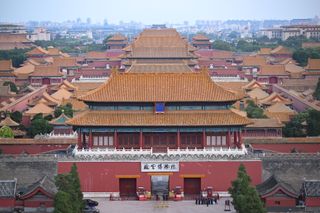
The Central Axis runs north to south through Beijing, showcasing imperial palaces, gardens and ceremonial and public buildings dating to the 13th century Yuan Dynasty. These structures “bear testimony to the evolution of the city” and exhibit “evidence of the imperial dynastic system and urban planning traditions of China,” UNESCO said. The more modern areas of the Central Axis feature construction from the Ming and Qing dynasties.
2. Dacia, Romania
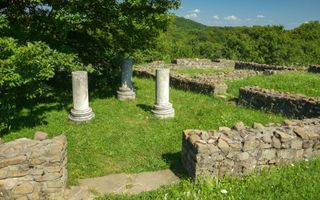
During the Roman Empire, the Dacian Limes formed the “longest, most complex land border” of any former Roman province in Europe, National Geographic said. North of the Danube River, these 277 auxiliary forts, ramparts, watch towers and legionary fortresses traverse 16 counties, making up a “network of eerie-looking” sites that “still stand as witnesses to the strategic role Dacia once played.”
3. Historical Town and Archaeological Site of Gedi, Kenya
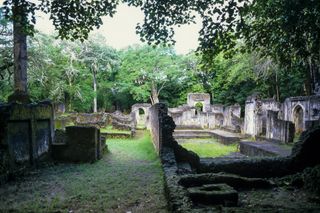
For centuries, Gedi was one of the most important Swahili towns near the East African coast, with a great mosque, palace, well-constructed homes and impressive infrastructure, including a water management system. Experts believe Gedi was founded in the 13th century, likely rebuilt in the 15th century during its most prosperous era and then permanently abandoned in the early 17th century. No one knows for sure why Gedi was deserted, with guesses including an epidemic wiping out the population or a Portuguese attack.
4. Lencóis Maranhenses National Park, Brazil

The white sand dunes and emerald and sapphire freshwater lagoons of Lencóis Maranhenses National Park create an otherworldly landscape in northeastern Brazil. Winds shape the dunes, and when it rains the lagoons change shape, depth, size and even color. More than 110 bird species and 42 reptile species call the park home, in addition to the endangered scarlet ibis, neotropical otter, oncilla and West Indian manatee.
5. Nelson Mandela Legacy Sites, South Africa

At these 14 sites representing “human rights, liberation and reconciliation,” visitors can walk in the footsteps of Nelson Mandela and other anti-apartheid activists. The locations include the University of Fort Hare, where Mandela studied, and the village of Mqhekezweni, where he got his start in political activism. The site of the Sharpeville massacre is a somber stop, a place to remember the 69 Black protesters killed here in 1960 as they protested pass laws.
6. Schwerin Residence Ensemble, Germany
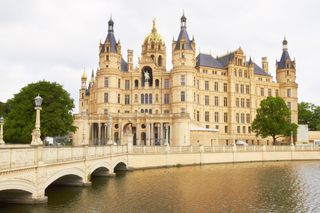
Nearly 40 elegant buildings make up the ensemble, with the Schwerin Castle, once the grand duke’s residence, the most opulent. Filled with parks and ornamental lakes, most of the structures in Schwerin were built during the 19th century, when the city was the capital of the Grand Duchy of Mecklenburg-Schwerin. Architectural styles include neo-Baroque, neo-Classical and neo-Renaissance with touches of Italian Renaissance.
7. Umm Al-Jimal, Jordan

The ruins of Umm Al-Jimal near the Jordanian-Syrian border showcase “unpretentious urban architecture,” Lonely Planet said, with the buildings providing a “fascinating insight into rural life during the Roman Byzantine and early Islamic periods.” This rural settlement primarily functioned from the 5th century CE to the end of the 8th century CE, but archeologists have uncovered structures dating to the 1st century. Although not much is known about those early days in Umm Al-Jimal, researchers have been able to study the site more than others in the region, as it was “rarely looted or vandalized, which has left much of the original layout intact,” Lonely Planet said.
Why are World Heritage Sites Important?
Each historical place tells a story that ties the past, present, and future together. World Heritage sites are essential to the sustained development of our culture and society. We must safeguard and conserve them for future generations as exceptional relics of our interconnected history that were handed down to us from our forefathers.
Read Also: The Impact of Social Media on Tourism
As social and educational hubs, museums and interpretation centers are crucial in bringing World Heritage sites to a variety of audiences. They actively support scientific research, education, and the preservation of cultural heritage. By bringing together sustainable development catalysts, this collaboration between museums and World Heritage sites has the ability to actively engage local people, leveraging their expertise to support employment and promote local cultural assets, thereby improving their well-being.
The second phase of the UNESCO Program connecting World Heritage sites and museums is expected to enhance the cultural sites of the Historic Cities of Melaka and George Town in Malaysia and the Historic City of Vigan in the Philippines: Investigating Southeast Asian World Heritage Sites: Reviving World Heritage Site Museums in Malaysia and the Philippines. Building on the success of its first phase in Cambodia, Laos, and Vietnam, the project’s main goal is to fortify the regional network of World Heritage sites, museums, and cultural site interpretation centers by means of a number of initiatives that will engage local communities, particularly women and young people, as well as professionals.
The following are the most important advantages of being a World Heritage Site:
- It brings international attention to the need for the preservation and conservation of the site.
- It brings tourism to the site, with its accompanying economic benefits to the host country and local area.
- It can provide funds for restoration, preservation, and training. For example, in 2001, the Taliban destroyed two 6th century, 150-ft. statues of Buddha carved into the mountainside in the Bamiyan Valley in Afghanistan. The site has received more than $4 million from UNESCO to help with reconstruction and to hire a sculptor to re-carve some of the damaged stone. As for training funds, $971,464 has been approved since 1983 for India projects.
- It promotes national and local pride in the natural and man-made wonders of the country.
- It promotes close ties with the United Nations system and the prestige and support it provides.
- It provides access to global project management resources.
- It facilitates creating partnerships between government, the private sector, and NGOs to achieve conservation goals.
- The site is protected under the Geneva Convention against destruction or misuse during wartime.
Below are some examples:
1. Historic City of Melaka, Malaysia

The historic centre of this vivid Malaysian city was awarded UNESCO World Heritage status in 2008, as a testimony to 500 years of trading and cultural exchanges between East and West. Colourful and flowery trishaws cruising around town, streets lined with crimson buildings, a great selection of museums and art galleries, combined with religious buildings of different faiths, ethnic quarters, many languages and festivals, dances, costumes, art and music make Melaka a rich and unparalleled cultural experience. The city’s architecture reflects a beautiful amalgamation of Portuguese, Dutch and British designs, while significant Chinese and Indian influences also paint its cultural landscape, making it a veritable melting pot of cultures.
16.7 million tourists in 2017
Historic City of George Town, Malaysia
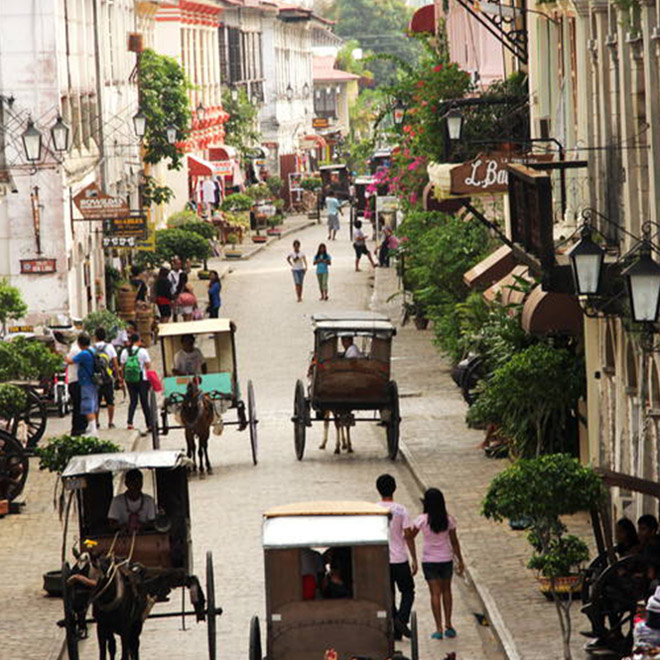
Known as the food capital of Malaysia, the city of George Town is also admired for its multiculturalism and its quaint and vibrant architecture. It made it to the World Heritage list in 2008, coupled with the city of Melaka. From beautiful heritage buildings and charming boutiques and cafés to modern skyscrapers and chic shopping complexes, George Town has something for everyone. The site consists of a number of historical buildings constructed by European traders that settled there during the British East India Company, and later by British colonists and migrants from various parts of the India-China trading route, reflecting a wonderful blend of Asian and European cultural elements.
6.5 Million tourists in 2017
Historic City of Vigan, Philippines

Inscribed to the World Heritage list in the year 1999, the town established in the16th century is considered as the best-preserved example of Spanish colonial town in Asia and earned the UNESCO World Heritage Centre’s award for Best Practice in Sustainable Conservation & Management of World Heritage Properties in 2012. Modern-day Vigan represents a unique fusion of Asian and European architectural designs and planning with its cobblestone streets and well-preserved heritage buildings and edifices. The town also boasts of an exquisite variety of traditional handicrafts, in particular abel weaving – a traditional, labour-intensive weave using locally-sourced cotton yarn (sagut) that helps produce a thick cotton fabric.
1.4 million Tourist in 2017
What is the Purpose of the Cultural Heritage?
Cultural legacy is a priceless gem that provides a glimpse into the common past and links to the origins, forms, and identity. It includes both the material and immaterial components of cultural identity, such as monuments, historic structures, customs, languages, art, music, and folklore. Maintaining cultural diversity, creating a sense of belonging, and transferring knowledge to future generations all depend on the preservation of cultural legacy, which is a mirror of society.
Cultural heritage has a significant impact on people’s values, beliefs, and sense of belonging throughout history. It offers a forum for artistic expression and cross-cultural interaction while acting as a source of inspiration and creativity. These are some main justifications for the importance of cultural heritage.
- Identity and belonging: Cultural heritage defines identity and gives a sense of belonging. It connects to ancestors and provides a cultural framework that helps one understand the place in the world.
- Historical perspective: Cultural heritage preserves historical narratives, allowing one to learn from the past, avoid repeating mistakes, and appreciate the progress have made as a society.
- Tourism and economic growth: Cultural heritage sites and traditions attract tourists, stimulating economic growth and creating jobs in the tourism industry.
- Cultural diversity: Cultural heritage is a testament to the richness of human diversity. It reminds ones of the importance of respecting and celebrating different cultures and traditions.
Preserving Cultural Heritage
Preservation of cultural heritage is a shared responsibility that involves individuals, communities, governments, and international organizations. Here are some key strategies for preserving cultural heritage.
- Documentation: Proper documentation of cultural artifacts, traditions, and historical sites is essential for their preservation. This includes recording oral traditions, cataloging artifacts, and creating digital archives.
- Conservation: Conservation efforts aim to protect physical heritage such as historic buildings, monuments, and artworks from deterioration. This involves restoration, maintenance, and the use of appropriate materials and techniques.
- Education and awareness: Promoting awareness and understanding of cultural heritage is crucial. Education programs, museums, and cultural events help raise public consciousness about the importance of preservation.
- Legal protection: Laws and regulations at the national and international levels are essential for safeguarding cultural heritage. These laws may restrict activities that could harm cultural sites or artifacts and promote responsible tourism.
- International cooperation: Cultural heritage often transcends national boundaries, making international cooperation vital. Organizations like United Nations Educational, Scientific, and Cultural Organization (UNESCO) work to protect and preserve cultural heritage worldwide.
Challenges to Cultural Heritage Preservation
Despite its importance, cultural heritage faces various challenges in the modern world
- Urbanization: Rapid urbanization can lead to the destruction of historic neighborhoods and sites, as cities expand to accommodate growing populations.
- Climate change: Climate change poses a threat to cultural heritage through increased risks of flooding, erosion, and extreme weather events.
- Conflict and war: Armed conflicts can result in the deliberate destruction of cultural heritage sites and the looting of artifacts.
- Neglect and decay: Lack of funding, resources, and expertise can lead to the neglect and decay of cultural heritage assets.
- Illicit trade: The illicit trade of cultural artifacts contributes to the loss of valuable heritage items and the erosion of cultural identities
A priceless inheritance that embodies our common humanity is our cultural heritage. Maintaining cultural diversity, creating a feeling of identity, and transferring information to future generations all depend on its preservation. To preserve and honor a cultural legacy, people, communities, governments, and international organizations must cooperate, despite ongoing difficulties. The treasures of the past can continue to inspire and enrich the present and the future if this is done.


